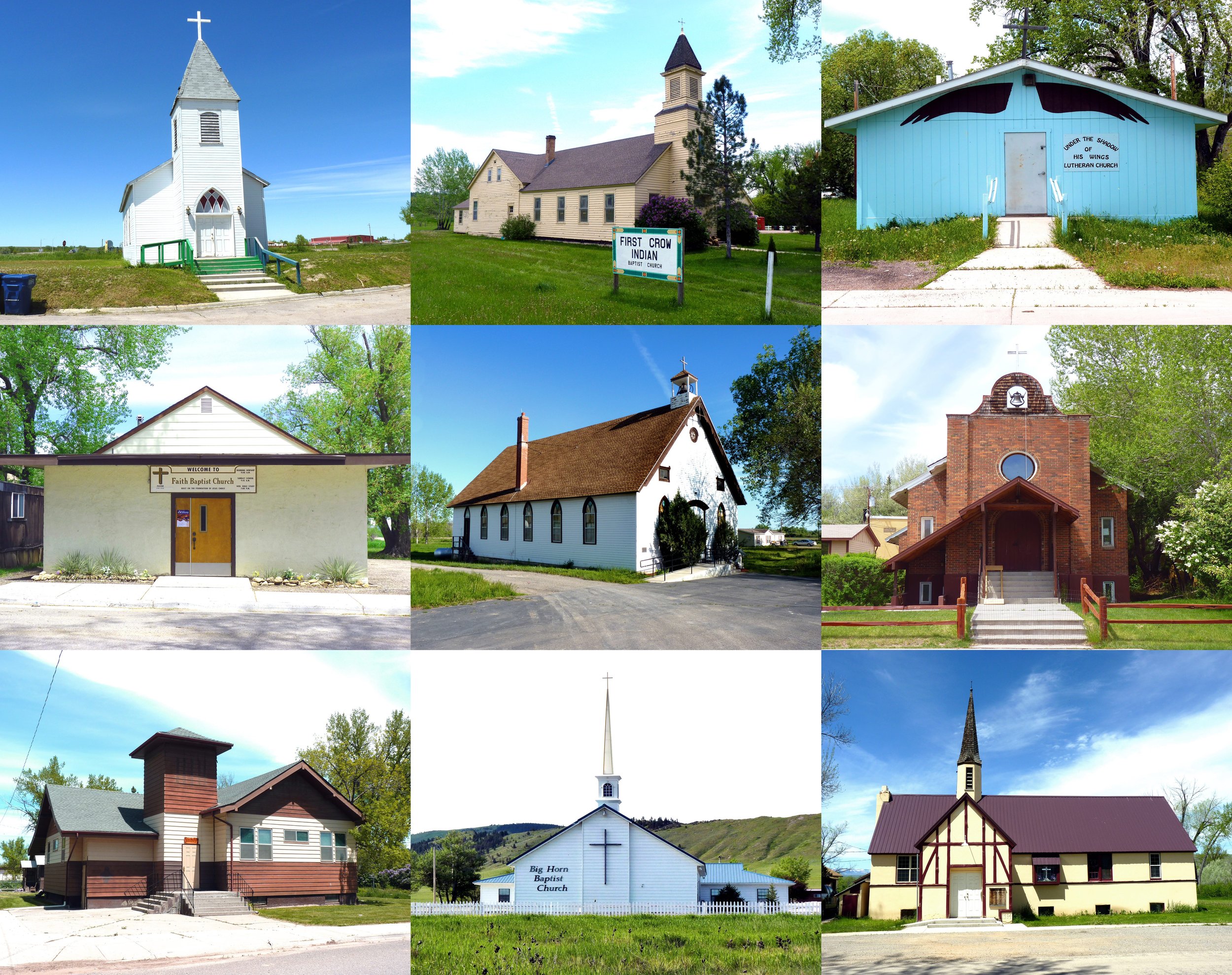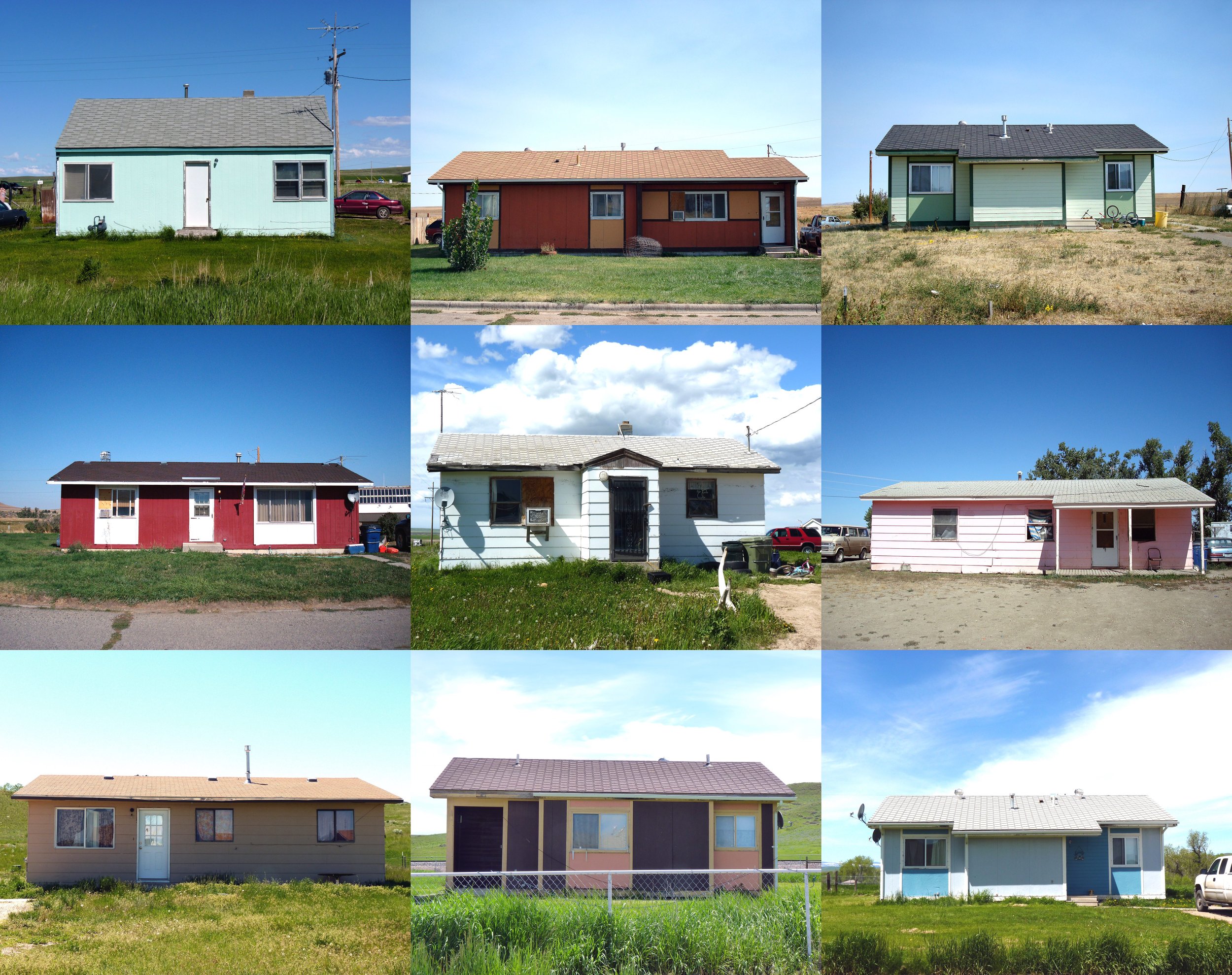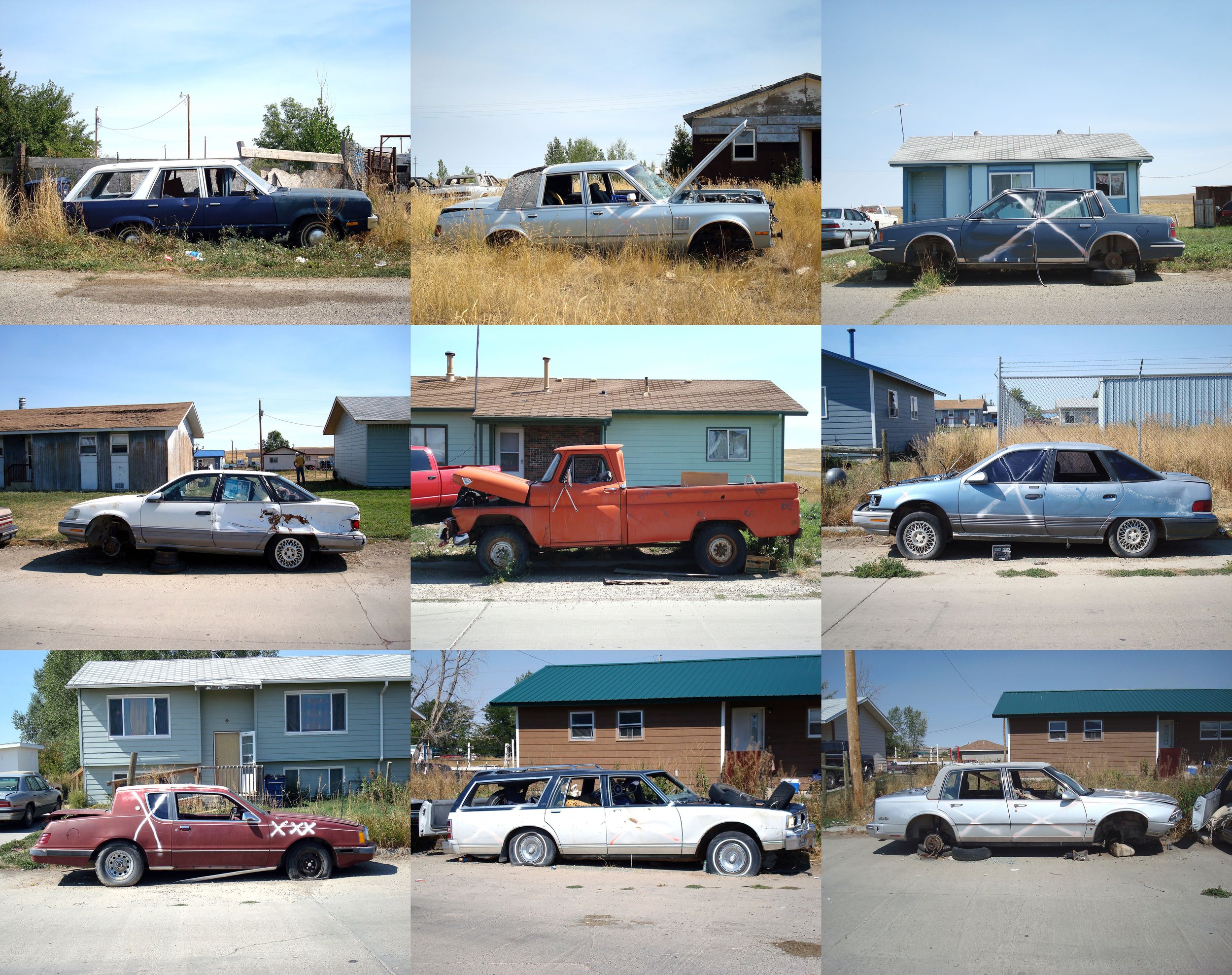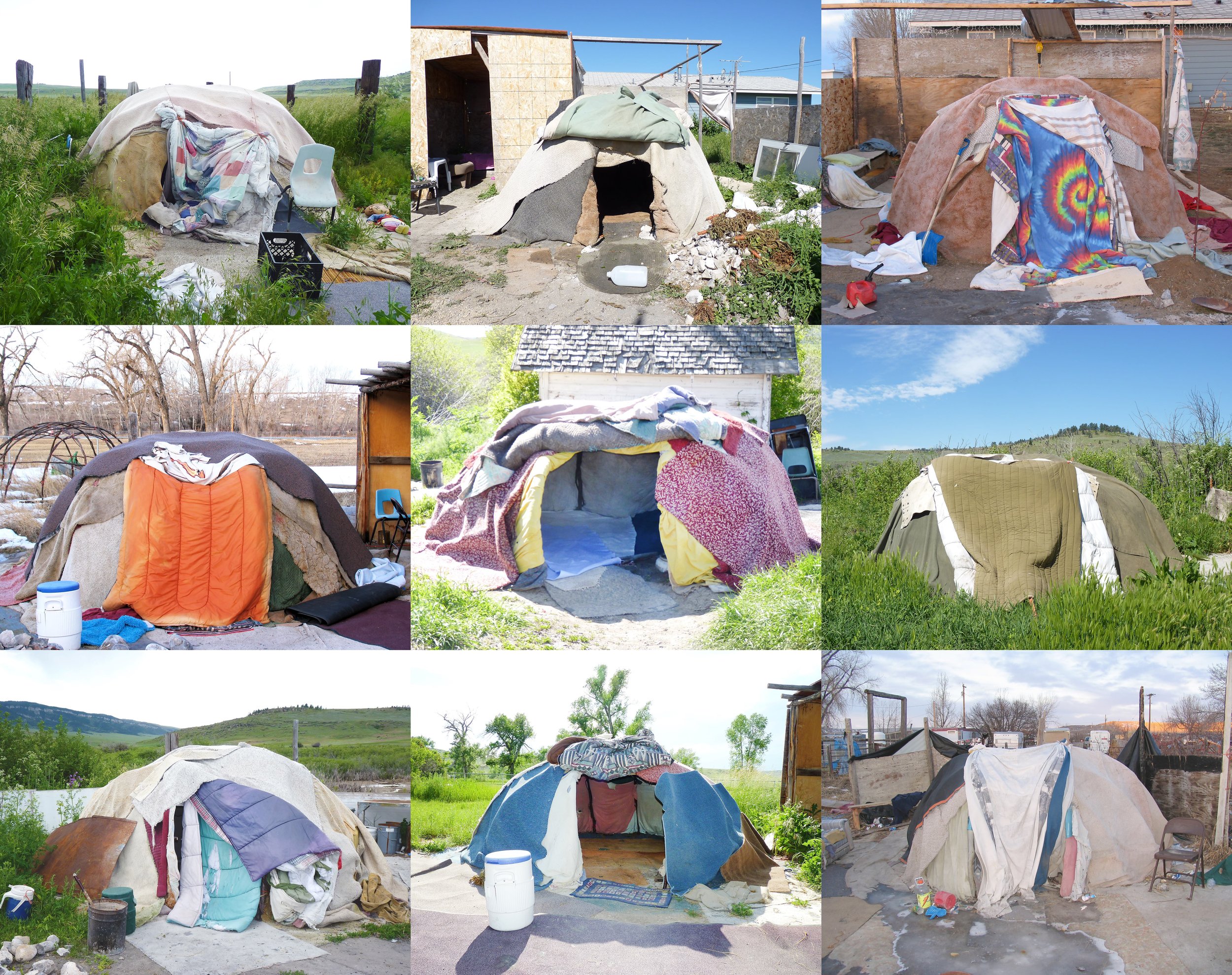My Home Is Where my Tipi Sits
My Home Is Where my Tipi Sits, 2011
Series of 5 Archival pigment print, 52 x 72 inches each
Edition of 4
The series My Home is Where My Tipi Sits creates gridded taxonomies of five idiosyncratic elements of Crow Reservation life: brightly colored government houses, broken-down “rez” cars, sweat lodges, signs, and churches. In lush, large-scale color photographs, the series provocatively combines a title based on the poetic phrase of a Crow chief responsible for negotiating the borders of the tribe’s territory with mundane and self-made visual attributes of daily life. Referencing the German photographers Bernt and Hilla Becher’s extensive series of photographic inventories of industrial buildings and structures, arranged in grids to sug- gest typologies or “families of objects,” Red Star honors this modern conceptualist approach while simultaneously complicating the formalist bent of the grid format. . . .
“The Crow were never adequately compensated for the loss of their lands throughout the nineteenth century, as the U.S. government offered them the equivalent of five cents per acre in addition to providing sub-standard houses. The grids are indices of contemporary Native life, an unsettling reference to class and the reality of life in reservation towns. Red Star’s series subverts the monumentality of the Bechers’ serial project, defiantly asserting an anti-architectural agency, and creates a family of objects based on information that privileges Native epistemologies, a factor that reverses the typical flow of information toward a Western audience. Red Star’s conceptual photographic works conjure the topographies of the modern-day Crow Reservation in order to subvert historical tendencies to classify Native lifeways into delimiting ethnographic categories.
— Text from Wendy Red Star: A Scratch on the Earth, Newark Museum exhibition catalogue, 2019, Nadiah Rivera Fellah and Tricia Laughlin Bloom
The title My Home is Where My Tipi Sits is drawn from a statement made by Crow Chief Sits in the Middle of the Land in 1868, when he was asked to describe the boundaries of Crow territory to the United States Government. This phrase, in Red Star’s usage, highlights the contrast between Western notions of property and land ownership and the inherently nomadic lifestyle of the Crow people. In this work, Red Star highlights this contrast by presenting the markers of the Crow lifestyle, rather than a map or boundary, as a way to catalogue reservation life.
-
-
Crocker Art Museum, Sacramento, CA
Forge Project, Taghakanic, NY
Herbert F. Johnson Museum of Art at Cornell University, Ithaca, NY
Solomon R. Guggenheim Museum, New York, NY




